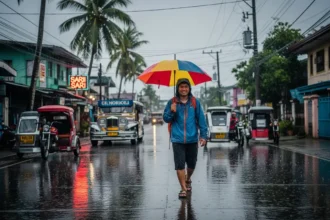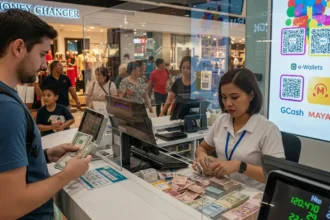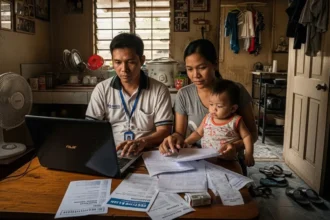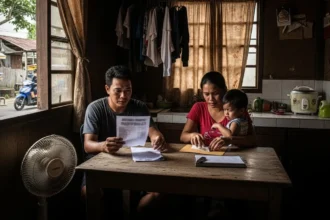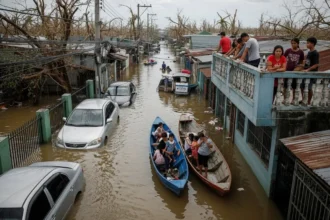Traveling around the Philippines – from Boracay’s white sands to Palawan’s lagoons – is a dream for many, but the cost of flights often feels like a barrier. For budget-conscious Filipinos, airline tickets can eat up a huge portion of a vacation budget, sometimes even more than accommodations and food combined. Yet, seasoned travelers, backpackers, and even balikbayans often brag about getting crazy-cheap promo fares that make everyone else wonder: How did they do it?
- 🕒 Timing Is Everything: When to Book
- 💻 Mastering Online Tools and Fare Alerts for Cheaper Flights
- 📊 Table 1: Fare Timing Strategy
- 🏷 Promo Fares: The Piso Fare Game
- 🎒 Flexibility: The Traveler’s Secret Weapon
- 🌍 Hidden Costs: Budget Airlines vs. Full-Service
- 📊 Table 2: Budget vs. Full-Service Airline Costs (Sample MNL–Cebu Flight)
- 🛡 Travel Hacks to Save More
- Frequently Asked Questions about Getting Cheap Airline Tickets in the Philippines
- 🌏 Travel Smart, Not Expensive
- ✈️ References
The truth is, scoring cheap airline tickets isn’t pure luck. Airlines operate with algorithms, seasonal patterns, and promotional strategies. If you understand how these systems work – and how to take advantage of them – you can dramatically cut your travel costs. From learning the “piso fare” game to timing your bookings just right, there are practical hacks that turn airfare from painful to affordable.
This guide is designed for the Filipino traveler who wants more than just vague advice. We’ll break down not only when and where to look for deals but also why airline pricing works the way it does. Whether you’re flying domestic or international, these insider strategies will help you save thousands of pesos every year.
So before you hit “book now” on your next flight, read through these proven tips. You might be surprised at how much you’ve been overspending – and how easy it is to fix.

🕒 Timing Is Everything: When to Book
One of the biggest myths in travel is that booking early always guarantees the cheapest fare. While that’s true in some cases, airline pricing is dynamic and influenced by demand. The sweet spot for domestic flights in the Philippines is usually 1–3 months before departure, while international flights are often cheapest 3–6 months ahead.
Airlines also release promos strategically. Cebu Pacific’s famous Piso Fare often drops around March and September, while Philippine Airlines runs anniversary sales and seasonal discounts. Low-cost carriers like AirAsia follow suit to stay competitive. Knowing these cycles gives you an edge.
Booking Days That Matter
- Tuesdays & Wednesdays – Historically cheaper as fewer people book flights midweek.
- Late-night browsing – Some travelers report cheaper fares after midnight when airlines refresh systems.
- Avoid peak dates – Holy Week, Christmas, and long weekends always have inflated prices.
Tip: Use apps like Skyscanner and Google Flights to track prices over time. They’ll alert you when fares drop, so you can pounce at the right moment.
💻 Mastering Online Tools and Fare Alerts for Cheaper Flights
In today’s travel landscape, technology is your most powerful ally in the hunt for affordable flights. Gone are the days of manually checking airline websites every day. Modern fare trackers, dedicated travel communities, and official airline apps have streamlined the process, allowing you to catch incredible deals the moment they drop. Leveraging these tools effectively can save you a significant amount of money and time.
Must-Use Tools for Every Traveler
1. Google Flights – For Visualizing and Tracking Fares Google Flights is arguably the most powerful free tool for exploring flight options. Its strength lies in its user-friendly interface and powerful data visualization. Instead of just searching for a specific date, you can use its flexible date grid and price graph to instantly see which days or weeks are the cheapest to fly. Its “Explore” feature lets you see prices for various destinations on a map, perfect for when you’re flexible with where you want to go. The most crucial feature is the “Track prices” toggle. By activating this for a specific route, Google will automatically email you when the fare significantly drops, doing all the monitoring work for you.
2. Skyscanner – For Comprehensive Comparisons Skyscanner excels at casting the widest possible net. It compares prices across hundreds of airlines-including both major carriers and budget airlines-as well as online travel agencies (OTAs). This is crucial because sometimes an OTA might offer a lower price than the airline itself. Skyscanner’s most beloved feature is the “Search Everywhere” function. If you’re feeling adventurous and just want the cheapest possible getaway, you can select your departure city and “Everywhere” as your destination, and it will show you a list of countries you can fly to, ordered from the lowest to the highest price.
3. Official Airline Apps (Cebu Pacific, PAL, AirAsia) Having the official apps of the major local airlines installed on your phone is a non-negotiable for any serious deal hunter. Airlines like Cebu Pacific, Philippine Airlines (PAL), and AirAsia frequently release app-exclusive promotions and flash sales that are not advertised on their websites. By enabling push notifications, you get instant alerts the second a major sale (like the famous “Piso Fare”) goes live. This gives you a critical head start before the deals are snapped up by the general public. These apps also make managing your booking, checking in, and accessing your digital boarding pass incredibly convenient.
4. Online Travel Communities (Facebook Groups & Forums) Sometimes, the fastest way to find a deal is through the power of the crowd. Facebook groups like “Piso Fare Promos” or “DIY Travel Philippines” are vibrant communities where thousands of members share promo links, seat sale announcements, and even “glitch fares” (mistake fares that offer ridiculously low prices) in real-time. These groups act as a collective alert system. Often, a member will post about a sale minutes after it’s released, long before you might get an official email. They are also a great resource for asking questions and getting travel tips from experienced bargain hunters.
By integrating these tools into your travel planning, you transform the process from a tedious, manual search into an automated, strategic hunt. Instead of endlessly refreshing websites hoping for a price drop, you can set up your alerts and let the deals come to you, ensuring you never miss an opportunity to save.
📊 Table 1: Fare Timing Strategy
| Flight Type | Best Booking Window | Typical Promo Months |
|---|---|---|
| Domestic (PH) | 1–3 months before | March, September |
| Southeast Asia | 3–5 months before | January, July |
| Long-haul (US/EU) | 5–8 months before | June, November |
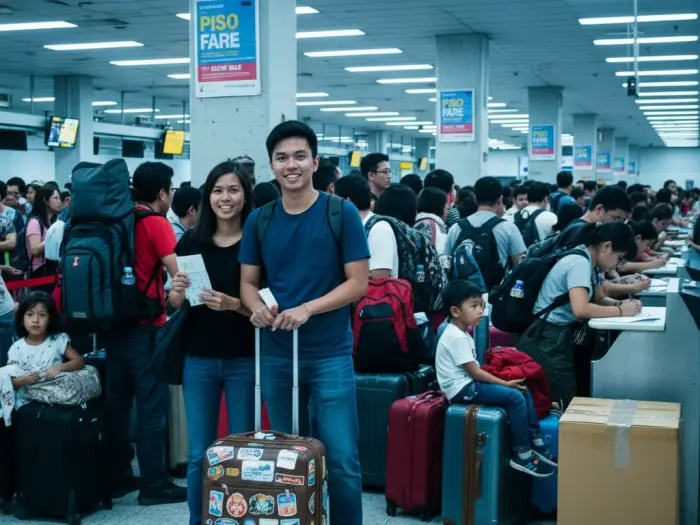
🏷 Promo Fares: The Piso Fare Game
No discussion about cheap flights in the Philippines is complete without mentioning the legendary Piso Fare. Introduced by Cebu Pacific, this promo offers tickets for as low as ₱1 (excluding taxes and fees). While you’ll still pay for add-ons like baggage and meals, the savings are huge compared to regular prices.
But here’s the catch: Piso Fare tickets sell out within minutes. To win the game, you need to be strategic.
Winning the Piso Fare
- Create an account on the airline app ahead of time for faster checkout.
- Save passenger details so you don’t waste time typing during booking.
- Use multiple devices (laptop + phone) for better chances.
- Book odd hours – promos often drop late at night or early morning.
It’s not just Cebu Pacific. AirAsia and even Philippine Airlines occasionally release ultra-low fares. Once you know the rules, these promos become your best friend for affordable travel.
🎒 Flexibility: The Traveler’s Secret Weapon
The more flexible you are, the cheaper your flight. Travelers who can fly midweek, during off-peak seasons, or at odd hours save the most.
For example, flying to Cebu on a Saturday morning might cost ₱4,000, but shifting your flight to a Tuesday afternoon could cut the fare in half. This principle applies internationally too – Manila to Tokyo could be ₱15,000 in April but drop to ₱8,000 in November.
How to Stay Flexible
- Be open to red-eye flights (late-night/early morning).
- Use fare comparison tools with “flexible date” options.
- Consider alternate airports (e.g., Clark instead of NAIA).
Travelers who treat flexibility as part of the adventure often get the biggest wins.
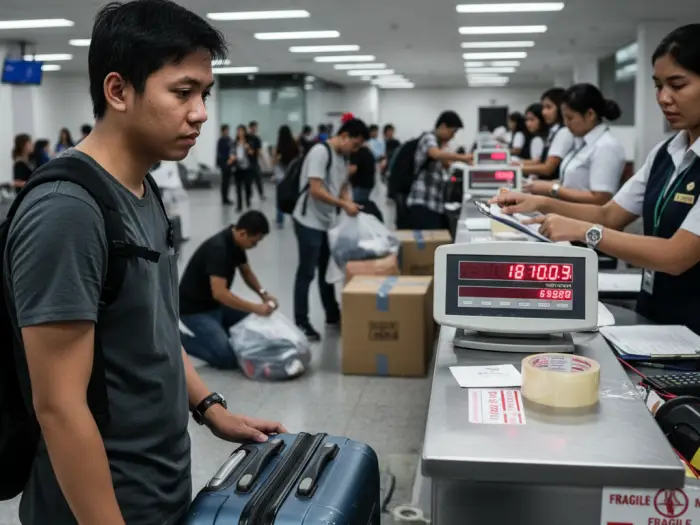
🌍 Hidden Costs: Budget Airlines vs. Full-Service
Cheap tickets aren’t always cheap once you factor in add-ons. Budget airlines lure you in with low base fares but charge for extras like baggage, meals, and even seat selection. Full-service carriers like PAL include most of these in the ticket price, so sometimes they’re more practical for long-haul flights.
Tip: Always calculate the total cost, not just the base fare. A ₱1,000 base ticket with ₱2,000 in add-ons isn’t cheaper than a ₱2,200 all-inclusive flight.
📊 Table 2: Budget vs. Full-Service Airline Costs (Sample MNL–Cebu Flight)
| Airline | Base Fare | Add-ons (20kg baggage + seat + meal) | Total Cost |
|---|---|---|---|
| Cebu Pacific | ₱1,200 | ₱1,600 | ₱2,800 |
| AirAsia | ₱1,100 | ₱1,500 | ₱2,600 |
| Philippine Airlines | ₱2,300 | Included | ₱2,300 |
🛡 Travel Hacks to Save More
Cheap tickets aren’t just about catching the next Piso Fare. The savviest travelers know that the best savings come from stacking multiple hacks together. Think of it like a puzzle: each trick saves you a few hundred pesos, but when combined, you end up saving thousands across a year of flights.
These strategies take a little extra effort, but they give you a serious edge over other passengers booking blindly. If you want to make traveling a regular habit without draining your wallet, these are the moves worth mastering.
Advanced Hacks
Use incognito mode when searching
Airline websites and booking platforms sometimes use cookies to track your searches. If you repeatedly check the same route, the system may interpret this as “high demand” and show higher prices. By switching to incognito or private browsing, you get a cleaner slate and often see cheaper fares. Some seasoned travelers even use VPNs to check fares from different countries, since airlines sometimes adjust pricing based on location.
Book one-way tickets separately
Many people assume round-trip tickets are always cheaper, but that’s not always true. Splitting your flights into two one-way bookings – especially with different airlines – can sometimes cut the cost. For example, Cebu Pacific might be cheapest flying Manila to Davao, but AirAsia could be cheaper for the return. This mix-and-match approach takes extra planning, but the savings add up fast.
Mix airlines strategically
Don’t be loyal to just one airline. Instead, treat them like tools in your savings arsenal. You might fly out on Cebu Pacific, return on PAL, and even squeeze in an AirAsia hop if you’re traveling multi-city. Mixing carriers also gives you flexibility on flight times, which can help you score cheaper midweek departures. Just be mindful of baggage policies – budget carriers often have stricter rules.
Leverage credit card points and rewards
Many Philippine banks partner with airlines like Cebu Pacific, AirAsia, or PAL through frequent flyer programs. Every swipe of your credit card earns points that can be converted into miles. Some cards even offer “welcome bonuses” large enough for a free domestic round-trip if you meet the initial spend requirement. Using credit wisely not only earns travel perks but can also cover taxes and fees that usually come with promo fares.
Watch out for hidden fuel surcharges
Budget fares sometimes hide behind add-on fees. International flights, in particular, often tack on “fuel surcharges” that can add thousands to your total bill. Always check the breakdown before booking. Sometimes, a fare that looks cheap upfront ends up more expensive than a competitor once surcharges are included. Being aware of this trick saves you from nasty surprises at checkout.
By combining these hacks, frequent travelers in the Philippines report saving 30–50% on airfare yearly. That’s the difference between one family trip a year and three. And once these tricks become second nature, you’ll wonder how you ever booked flights without them.
Frequently Asked Questions about Getting Cheap Airline Tickets in the Philippines
- How early should I book domestic flights to get the best price?
For flights within the Philippines, booking 1–3 months before your travel date tends to yield the best deals because airlines often release promos or adjust fares during that window. Booking too far ahead or last minute usually means paying more. - What is the “Piso Fare” game, and how do I win it?
Piso Fare is a promo (by Cebu Pacific and occasionally others) where the base ticket price starts as low as ₱1, but you still pay taxes, fees, and add-ons. To win, you need to act fast, use the airline’s app (with details saved), be flexible on timing, and sometimes use multiple devices/load pages for speed. - Does booking midweek or at odd hours really save money?
Yes – fares are often cheaper on Tuesdays or Wednesdays when fewer people are searching or booking flights. Late-night or early-morning browsing helps too because airlines sometimes release or refresh fares during those hours. - What hidden costs should I watch out for with cheap or budget airlines?
Budget flights often charge extra for baggage, meals, seat selection, and sometimes fuel surcharges. The base fare might be low, but once you add everything up, a full-service airline might end up competitive or even cheaper. - Should I always use one airline for round trips or mix carriers?
Mixing airlines can sometimes save more money because one airline might have the cheaper outbound flight and another might offer a better return. But be mindful: mixing means you might have different baggage rules, booking platforms, or layover logistics. - Do airline searches really get more expensive if I check them often?
It’s debated, but many travelers report seeing price increases after repeated searches due to cookies or perceived demand. To avoid this, use incognito mode or clear cookies before searching. - Are there good tools or apps that alert me to cheap flights or promos?
Yes – Google Flights and Skyscanner are great for tracking fares and showing flexible-date options, while official airline apps often send app-exclusive promos and flash sales if you enable notifications. Being plugged into airline apps and travel communities is key to catching deals early. - Is it cheaper to fly via Clark than Manila’s NAIA for domestic or international flights?
Often yes – sometimes flights out of Clark have lower fares because of lower airport fees or less congestion. But you also have to consider how much it costs and the time it takes to get to and from the airport. - How far ahead should I book international flights to find promos?
For destinations in Asia, airfares start to drop about 3–5 months in advance; for longer-haul trips (e.g., to Europe or the Americas), 5–8 months tends to be better. Booking too early or too late outside those windows often means missing the best deals. - Can I use digital wallets like GCash or Maya to book flights and catch promos?
Yes – many airlines in the Philippines now accept digital wallets, which can speed up the booking process during promos. Using them may also help if you don’t have a credit card, but always check the payment options before booking.
🌏 Travel Smart, Not Expensive
Flying doesn’t have to be a luxury reserved for the wealthy. With the right strategies, every Pinoy can travel more often without going broke. Airline pricing may feel unpredictable, but once you understand its patterns, you’re no longer at the mercy of inflated fares. Instead, you become the kind of traveler who books smart, saves big, and flies more often.
But beyond saving money, cheap flights mean opportunities: seeing family in the province more often, exploring new islands, or even taking that first international trip. Travel enriches us with memories and experiences, and if you can cut airfare costs, you free up more budget for food, culture, and adventure.
As travel demand grows in 2025, competition among airlines is fierce – and that’s good news for you. The promos are out there; the hacks are proven. The only question left is: will you be ready the next time that piso fare pops up on your screen?
✈️ References
-
Traveloka – Unlock Affordable Travel: Mastering PISO FARE Bookings
-
TheTravelClub PH – 6 Flight Booking Hacks to Score the Cheapest Airfare
-
Skyscanner – Compare Cheap Flights & Book Plane Tickets
-
The Poor Traveler – 12 Flight Booking Tips & Tricks PH
-
Reddit r/phtravel – How Early Do You Book Flights to Get Good Deals?
-
AirAsia – AirAsia Piso Sale 2025




